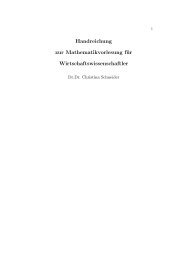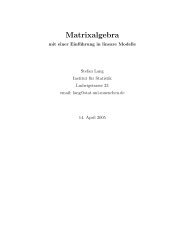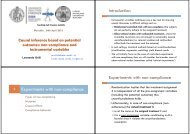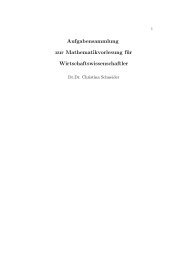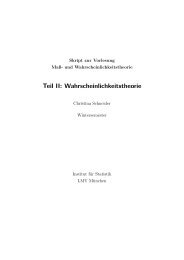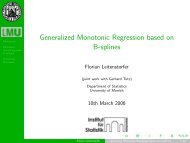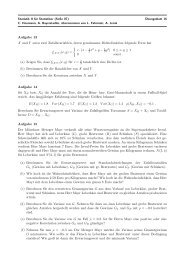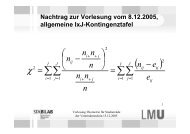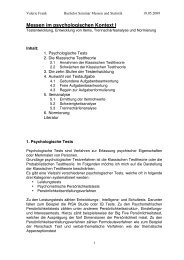You also want an ePaper? Increase the reach of your titles
YUMPU automatically turns print PDFs into web optimized ePapers that Google loves.
4.1 Using the <strong>lqa</strong>() function 14<br />
with input parameters<br />
formula<br />
family<br />
penalty<br />
data<br />
method<br />
standardize<br />
a symbolic description of the model <strong>to</strong> be fit. A typical formula<br />
has the form response ∼ terms, where response is the<br />
(numeric) response vec<strong>to</strong>r and terms is a series of terms which<br />
specifies a linear predic<strong>to</strong>r for response. Per default an intercept<br />
is included in the model. If it should be removed then use<br />
formulae of the form response ∼ 0 + terms or response ∼<br />
terms - 1.<br />
a description of the error distribution and link function <strong>to</strong> be used<br />
in the model. This can be a character string naming a family<br />
function, a family function or the result of a call <strong>to</strong> a family<br />
function. (See the R-function family() for details of family<br />
functions.)<br />
a description of the penalty <strong>to</strong> be used in the fitting procedure.<br />
This must be an object of the class penalty.<br />
an optional data frame containing the variables in the model. If<br />
not found in data, the variables are taken from<br />
environment(formula), typically the environment from which<br />
the function <strong>lqa</strong> is called.<br />
a character indicating the fitting method. The default value<br />
method = "<strong>lqa</strong>.update2" applies the LQA algorithm.<br />
a Boolean variable, whether the regressors should be standardized<br />
(this is recommended) or not. The default value is standardize<br />
= TRUE.<br />
... further arguments passed <strong>to</strong> or from other methods.<br />
This call returns an object obj of the class <strong>lqa</strong> which moreover inherits the class attributes<br />
glm and lm. As a consequence, we could apply <strong>to</strong> obj the typical methods as for instances<br />
of the class lm. Some of them are modified in order <strong>to</strong> meet the special needs of <strong>lqa</strong><br />
instances, see below.<br />
For illustration, consider the following small example. We simulate a GLM<br />
µ i = h(η i ), i = 1, . . . , n,<br />
with n = 100 observations and p = 5 covariates, where the predic<strong>to</strong>r η i = β 0 + x ⊤ i β<br />
consists of the true parameters β 0 = 0 and<br />
β = (1, 2, 0, 0, −1) ⊤ .<br />
The original design matrix (not regarding the intercept) consists of five univariate standard<br />
normally distributed covariates x (1) , . . . , x (5) . In order <strong>to</strong> get a s<strong>to</strong>chastic dependency<br />
structure, we replace x (2) and x (3) by x (1) where some additional noise is applied <strong>to</strong><br />
obtain correlations near one but not exactly equal <strong>to</strong> one. As a result, we get a simulation



